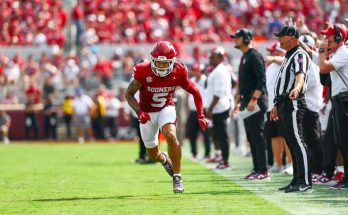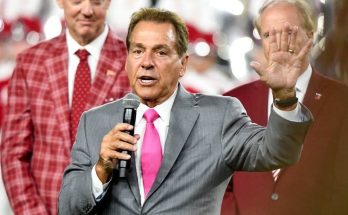Chris Drury, the New York Rangers’ President and General Manager since May 5, 2021, announced today that the team has agreed to terms with forward Adam Edström on a two-year contract extension. The deal, which carries an average annual value of $975,000, solidifies Edström’s place in the organization and reflects the Rangers’ commitment to nurturing rising talent within their system , .
Drury, a former NHL player and seasoned executive who has become the face of the Rangers’ front office, expressed confidence in Edström’s future contributions. At 6-foot-6 (some reports list him at nearly the same height), the Swedish winger made a memorable impression in his first full NHL season. Although a lower-body injury on February 1 required surgery and prematurely ended his regular campaign, Edström showed flashes of promise that earned him this extension .
In the 51 games he played before his injury, Edström recorded five goals—two of which were game-winners—along with four assists. He averaged 9:16 of ice time per game and found meaningful chemistry on a fourth-line unit alongside Matt Rempe and Sam Carrick. The trio outscored opponents 4–0 and registered a positive scoring-chance differential of 31–28 at 5-on-5 during their 76 minutes on the ice, according to Natural Stat Trick .
At his introductory media availability, Edström acknowledged the injury had been a setback but emphasized the support and rehab he received from the organization. “It took some time,” he said. “But the help I’ve gotten here, it’s been great. The more time went on, kind of shifted my focus into getting ready for next season and coming back in great shape.” That commitment to recovery and readiness was central to the Rangers’ decision to extend him early in the offseason .
Edström’s path to this point reflects gradual but steady development. After being selected in the sixth round (161st overall) in the 2019 NHL Draft, he continued honing his craft in Sweden—first in the SHL with Mora IK and then Rögle BK. He signed his entry-level deal in May 2022, debuted in December 2023 (scoring his first NHL goal in his first game against Anaheim), and earned a roster spot for the 2024–25 season out of training camp .
Throughout the early season, Edström demonstrated that he could contribute beyond brute size. In September’s rookie camp he showed skating ability, physicality, and positional awareness. By October and November, he was holding down a fourth-line role, and in January he delivered one of his best months—five points in 14 games with solid performances against Colorado and Vegas. But his momentum was cut short when he sustained the lower-body injury, ending a promising run .
On defense, head coach Peter Laviolette has already acknowledged that Edström is “progressing well” in recovery and rebuilding strength on the ice . With Edström expected to arrive at training camp in Fighting trim, the Rangers are banking on his growth, versatility—as he can play all three forward positions—and his ability to become a regular bottom-six fixture.
Adam Edström’s two-year extension mirrors that of his linemate Matt Rempe, another power-forward who secured a similar deal last week. The strategy is clear: the Rangers are locking up their physical depth early in free agency, ensuring they retain their emerging fourth-line identity and maintain internal stability . With other looming restricted free agents like Will Cuylle, Zac Jones, and K’Andre Miller still unsigned, the organization is signaling that it values continuity and controlled growth.
This contract also carries positive cap implications. At $975,000 AAV, it offers financial flexibility while reinforcing internal competition, enabling the Rangers to allocate resources both to be competitive and to adapt in free agency. It’s a low-risk, potentially high-reward move—not unlike many of Drury’s previous roster decisions.
That brings into sharper focus the broader context of Chris Drury’s vision for the franchise. Drury’s tenure began in 2021 when he stepped into roles as President and General Manager after years climbing the Rangers’ front office ladder. His record speaks volumes: a 193–105–30 regular-season record across four full seasons, three playoff berths, and two trips to the Eastern Conference Final (2022, 2024). Most notably, he orchestrated the franchise’s first-ever Presidents’ Trophy in 2023–24, with 55 wins and 114 points—a milestone in team history (.
Despite that success, the Rangers stumbled in 2024–25, finishing 39–36–7 and missing the playoffs—becoming the fourth team in NHL history to miss the postseason a year after winning the Presidents’ Trophy . That collapse led to a change behind the bench—Drury dismissed Peter Laviolette and is actively pursuing a high-profile replacement likely to be Mike Sullivan of the Pittsburgh Penguins, a tenure reportedly preferred by Drury due to their Boston University connection and shared philosophy .
Despite frustration among some fans—who took to social media decrying Drury’s extension after the recent disappointment—MSG Sports CEO James Dolan reaffirmed trust in Drury’s strategic plan and work ethic. Dolan emphasized Drury’s relentless pursuit of excellence and belief in his ability to steer the franchise forward .
Drury himself took accountability for the team’s shortcomings. “It starts with me,” he said. “I need to do a better job and give the staff and players the opportunity to succeed.” That statement accompanied his multi-year extension signed in April 2025—a contract structure believed to run through at least 2027–28 .
Critics have questioned aspects of his tenure, citing inconsistent trades, mixed free-agent signings, and coaching instability. But even dissenting voices credit him for building a winning culture and fostering young talent—a reputation Forbes analyses have acknowledged .
Locking up Edström aligns neatly with a front-office philosophy built on internal development and sustainability. After all, Drury himself began as Director of Player Development in 2015, ascending through the ranks to Assistant GM, Associate GM, and AHL GM of the Hartford Wolf Pack before taking over the Rangers’ helm . He has deep roots in creating organizational culture and has instilled patience in nurturing prospects—much like he’s doing now with the likes of Edström and Rempe.
Adding Edström to that fold reflects the type of depth Drury envisioned when he reshaped the roster. Edström embodies a hybrid of size, skill, and skating—especially at his height—that could evolve into consistent bottom-six production and occasionally top-six minutes. His versatility, combined with power-forward remapping, offers the Rangers flexibility to mix lines and match roles depending on opponent and circumstance .
Furthermore, Edström’s return to health could provide a stabilizing influence in the physical game—an aspect where he and Rempe forged a formidable presence in 2024–25 despite limited offensive stats. Their fourth-line chemistry hinted at a strong identity unit, a bench advantage that is critical in playoff hockey. By committing to Edström now, the Rangers not only secure potential but also preserve depth that may prove decisive come postseason time.
Financial prudence is another consideration. At under $1 million AAV, Edström’s extension is a bargain relative to his upside. It allows Drury to explore mid-tier free agent opportunities or trade flexibility without compromising salary cap space. This balancing act reflects Drury’s broader cap management—preserving funds for impactful signings while building reliable depth organically .
Looking ahead, the extension gives Edström two seasons to complete his development arc. Expectations are clear: he must stay healthy, produce consistently, and expand his role. Doing so could elevate him from a fringe fourth-liner to a full-season bottom-six mainstay—or, at best, earn occasional top-six minutes if he demonstrates scoring and defensive reliability.
For Rangers fans, the news is clear: management is doubling down on a youth-heavy core, anchored by experienced leadership up top. Drury’s extension earlier this spring affirmed organizational continuity. Edström’s new deal now establishes forward-line continuity. These moves sandwich the offseason between structural reinforcement and youth investment—signaling a phased rebuilding approach that resists reactive, hasty fixes.
In the offseason ahead—marked by draft picks, coaching decisions (possibly formalizing Sullivan’s hire), restricted free-agent negotiations, trades, and summer development—having Edström locked in gives the team a known baseline. Rather than courting unknown external talent, the Rangers are building on what they already have, hoping momentum travels from the boardroom to the ice.
The ultimate barometer will be how they start next season. A coherent front office, a healthy roster of emerging young players, and a clear identity on the ice—a disciplined, physical, and caring team—are essential. Training camp will reveal Edström’s readiness, Sullivan’s potential system changes, and the entire team’s ability to blend new strategies with existing chemistry.
Should Edström recover fully and usurp a more prominent role, his two-year extension could pay off large. His progression would underscore the soundness of Drury’s developmental philosophy.
Together, this pairing illustrates a deliberate path: front-office longevity + youth development + sensible budgeting + structural cohesion. All of it is oriented toward returning the Rangers to consistent playoff contention—and, ultimately, Stanley Cup relevance.
On paper, it’s a compelling narrative. In practice, the results must follow. With Drury retained and Edström onboard, the Rangers’ offseason scripts have been written. Now begins the real test: turning institutional alignment into on-ice excellence.



